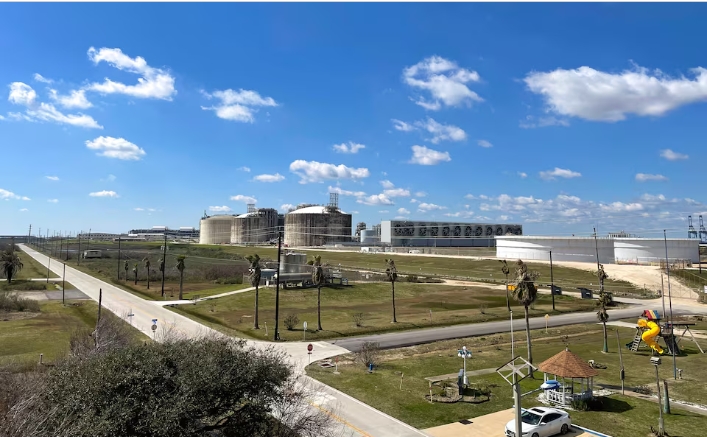
Beryl hit the Texas coast on July 8, causing damage to ports and energy infrastructure and leaving more than 2 million customers without power.
Freeport LNG, which shut its three liquefaction trains on July 7 and later reported wind damage, has had a slow operational restart since.
The Marshall Islands-flagged tanker Axios II left one of Freeport LNG's berths over the weekend carrying the first cargo shipped by the facility since July 5, according to vessel tracking data from LSEG.
On Monday, the Bermuda-flagged Gaslog Wales was loading at Freeport LNG and two more vessels were waiting near the port. The Gaslog Wales waited more than two weeks to load, the data showed.
The amount of gas flowing to the 2.1-billion cubic feet per day (bcfd) facility was on track to rise to around 1.0 bcfd on Monday from about 0.8 bcfd on Sunday, according to preliminary LSEG data.
Freeport LNG said on Monday the company is safely progressing the restart of its liquefaction trains, so processing rates are expected to fluctuate as the restart continues. It declined to provide operational details.
Contrary to other plants, Freeport LNG's operations are powered by electricity from the grid, so almost all of the natural gas it is pulling in is being turned into LNG.
Gas flows to the seven big U.S. LNG export plants have fallen to 11.5 bcfd so far in July after Freeport LNG shut, down from 12.8 bcfd in June and a monthly record high of 14.7 bcfd in December 2023.
With Freeport ramping up and hot weather forecast to return next week, U.S. front-month gas futures for August delivery on the New York Mercantile Exchange were up 9.2 cents, or 4.3%, to $2.220 per million British thermal units (mmBtu) by 9:04 a.m. EDT (1304 GMT).
That has put the contract on track for its highest close since July 12.